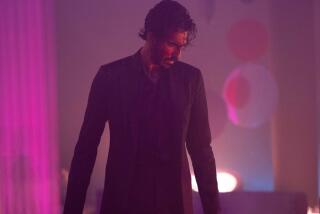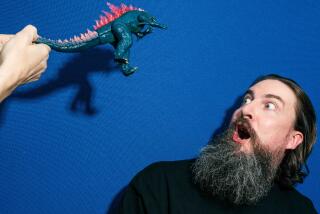Working Hollywood: Nikita Patel gave Rango the ability to move
Without Nikita Patel and the other creature technical directors, or TDs, at Industrial Light & Magic, Rango the chameleon, who stars in the title role of Paramount’s new film from director Gore Verbinski, would lack one of the key traits of any good animated character: the ability to move.
“Our department basically works on the simulations and the rigging of the characters,” she said. “Rigging is putting a skeleton inside the model so that the animators can move it around. And if we want to see more realism out of it, the creature TDs will go in and add some simulation to the muscles and the flesh to make it jiggle or look more real.”
Patel, 26, first discovered computer programming during a summer program for high school students at Bristol University in England, where she later studied computer science and French. In 2006, she met representatives from ILM at SIGGRAPH — a computer graphics and interactive techniques conference — and a few months later, they offered her a job.
“Ever since a young age, I have loved Disney movies, and I still watch them over and over again,” she said. “So I always knew that I wanted to do something creative. What I really like about working at ILM is that they are always trying to achieve realism with all the movies they work on. And ‘Rango’ is really exciting, because it’s ILM’s first animated feature, and I’ve always wanted to work on an animated movie.”
Big rigs: Using such programming languages as Python and the Maya Embedded Language, Patel and her department added rigging to the static 3-D models of the characters and objects before passing them along to the animators. “It’s like adding joints into the model and adding controllers,” she said. “So the rigging looks like bones, and we add controllers over those. And the controller is just a square box or circle that the animators can select, and if they move it a certain direction, that controller will move the arm, for example. We did that on every character so that the animators could move the arms, throw a rock, jump over buildings, that kind of thing.”
Crowd control: “I think there were over 200 characters, some of which didn’t get used, but there were a lot,” said Patel. “And characters weren’t our only focus. We had a lot of buildings that we had to develop and environments, and there were over 1,000 props on the show, because you’ve got to think of everything from logs to lassos and guns. We basically had to rig them and give them to the layout people so they could dress the sets up.”
Tail spin: “The main character we focused on was Rango,” Patel said of the character voiced in the film by Johnny Depp. “He had a funny, crooked neck, and we spent quite a lot of time trying to get a rig together for his tail that could also be applied to other characters who had tails. But every character got its own bit of attention. They all have their own quirks, and so you definitely see that in the movie.”
Fowl language: The birds in the film nearly drove Patel cuckoo. “We wrote a lot of tools to help with challenges we came across, because some of the bird characters had long necks, or there were feathers intersecting with the cloth, and feathers moving with the different facial expressions,” she said. “For example, when the animators would make face expressions with the mariachis, which are owls, the beaks would get in the way of their feathers and eyebrows. So we had to write tools to make that subtler.”
Animal kingdom: “We had reference material, and we definitely looked at videos of various animals to see how their movements are,” she said. “There’s a character that’s a rabbit, and we looked at footage of rabbits, like how they interact and how they show signs of being nervous and things, and then we put that in our rig so that the animators could animate that motion.”
More to Read
The biggest entertainment stories
Get our big stories about Hollywood, film, television, music, arts, culture and more right in your inbox as soon as they publish.
You may occasionally receive promotional content from the Los Angeles Times.






